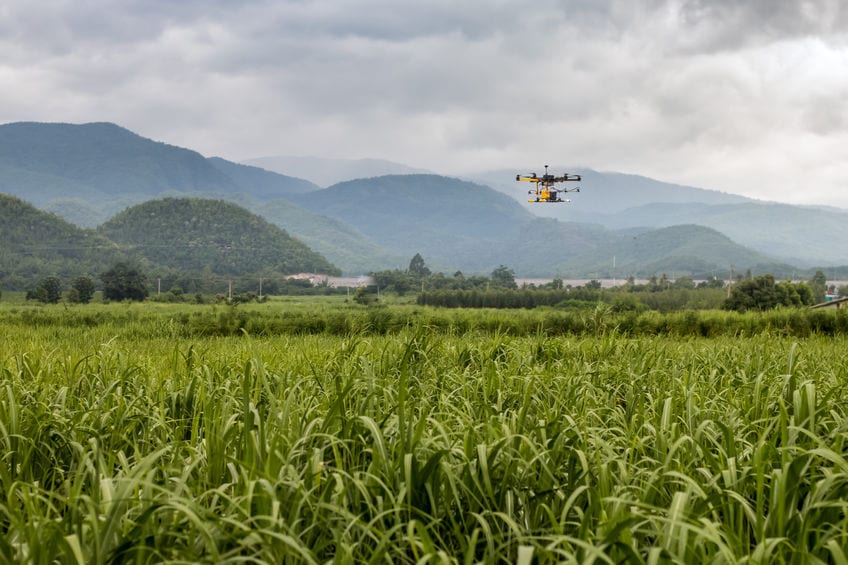
IoT
Improved Duty Cycling Algorithm for IoT-Based Precision Agriculture
Improved Duty Cycling Algorithm for IoT-Based Precision Agriculture
The field of Internet of Things (IoT) is constantly improving, especially when it comes to IoT-based agriculture and increasing the productivity and yield in the farm fields through the processes of real-time monitoring of agriculture field parameters.
The data in the farm field in the current methods is collected using sensors such as soil sensors, temperature and humidity sensor, air quality sensor and video camera mounted on drones. The data is then aggregated at the base station and forwarded to a gateway – which is energy-efficient but still has many challenges.
Using Duty Cycling Data Aggregation to Improve the Efficiency and Performance of the Base Station
A new paper published by two authors at the Symbiosis International (Deemed) University in Pune, India aims at a new approach which uses a duty cycling data aggregation algorithm in order to improve the energy efficiency and the performance of the base station.
As the authors note, this algorithm is meant to reduce the energy consumption in special events such as cloudy weather – and optimizes the reliability and network lifetime. Moreover, the performance of various algorithms is “compared using No Duty Cycling (NDC), Duty Cycling (DC) and the proposed Improved Duty Cycling algorithms (IDC). The results show that the proposed IDC outperforms the other two algorithms.”
Motivated by the Farmbeats project of Microsoft which works on precision agriculture, the authors propose an algorithm that enhances the performance of the data aggregator node in terms of energy efficiency and QoS efficiency. The performance of their algorithm is then compared with two existing algorithms and the simulation results show the improved duty cycling algorithm and how it performs better with regards to various performance metrics such as energy consumption, residual energy (throughout) and the processing time.
Presenting Related Work on Energy Efficient Duty Cycling Algorithms (With Full Review)
In one section, the authors of the paper present the related work on energy efficient duty cycling algorithms – presenting a systematic review that identifies the gaps of various research studies conducted on duty cycling algorithms (adaptive control duty-cycling, adaptive duty-cycling congestion etc).
As they originally describe their methodology:
“The proposed work is based on conducting simulation experiments in the Network Simulator tool. The simulation scenario consists of nodes to capture the data rate of soil sensors collecting numeric data about the soil condition such as moisture, pH value etc. To capture how real camera sent the snapshots of the farm field in regular, the simulation scenario uses nodes with the data rate capturing regular image data being sent by camera nodes to the base station. Moreover, to represent the video information of the drones, the nodes in the simulator are configured with the data rate representing video data rate. Both camera sensor and drone sensor having the multimedia data which required high bandwidth.”
The improved duty cycling (IDC) algorithm of the authors is based on energy efficient data aggregation at the base station using residual energy parameters – as well as using two residual energy thresholds (one for the network and the other for the path).
Final Conclusion and Future Work
After evaluating their methodology and various algorithms in detail, the authors conclude the review with proposing a modified duty cycling efficient path planning algorithm for the IoT based precision agriculture system – where the performance of the proposed IDC is evaluated and analyzed with new forms of the protocol.
“We vary the density of sensor nodes to check the scalability performance of IDC. The simulation results revealed that the proposed algorithm is showing improvement in energy efficiency as well as throughput performances. As an ongoing work, we are aiming to test the improved duty algorithm on the hardware base station in the field.”
As they note in the conclusion, the future work for these authors would challenge them to investigate the clustering based technique to optimize the network lifetime performance.
Citation: An Improved Energy Efficient Duty Cycling Algorithm for IoT based Precision Agriculture, Ruchi Dhalla, Himanshu Agrawalb, Procedia Computer Science, Volume 141, 2018, Pages 135-142, https://doi.org/10.1016/j.procs.2018.10.159, https://www.sciencedirect.com/science/article/pii/S187705091831809X



























